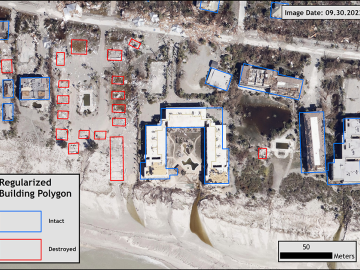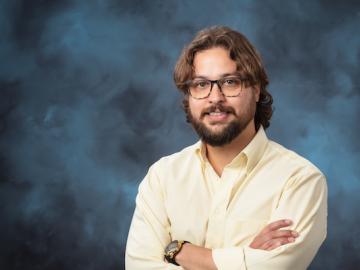
Filter News
Area of Research
- (-) National Security (39)
- (-) Neutron Science (64)
- Advanced Manufacturing (24)
- Biological Systems (1)
- Biology and Environment (64)
- Building Technologies (3)
- Computational Biology (2)
- Computational Engineering (2)
- Computer Science (11)
- Electricity and Smart Grid (3)
- Energy Science (202)
- Energy Sciences (2)
- Functional Materials for Energy (2)
- Fusion and Fission (14)
- Fusion Energy (3)
- Isotope Development and Production (1)
- Isotopes (29)
- Materials (152)
- Materials Characterization (1)
- Materials for Computing (19)
- Materials Under Extremes (1)
- Nuclear Science and Technology (16)
- Quantum information Science (9)
- Sensors and Controls (1)
- Supercomputing (87)
- Transportation Systems (1)
News Topics
- (-) 3-D Printing/Advanced Manufacturing (8)
- (-) Biomedical (16)
- (-) Cybersecurity (19)
- (-) Energy Storage (8)
- (-) Grid (6)
- (-) Machine Learning (15)
- (-) Materials Science (24)
- (-) Physics (10)
- (-) Quantum Science (8)
- (-) Space Exploration (3)
- Advanced Reactors (2)
- Artificial Intelligence (18)
- Big Data (8)
- Bioenergy (10)
- Biology (11)
- Biotechnology (2)
- Buildings (1)
- Chemical Sciences (5)
- Clean Water (2)
- Composites (1)
- Computer Science (31)
- Coronavirus (12)
- Environment (13)
- Exascale Computing (1)
- Fossil Energy (1)
- Frontier (2)
- Fusion (2)
- High-Performance Computing (6)
- Hydropower (1)
- Materials (16)
- Mathematics (1)
- Microscopy (3)
- Nanotechnology (11)
- National Security (35)
- Neutron Science (120)
- Nuclear Energy (7)
- Partnerships (5)
- Polymers (1)
- Quantum Computing (1)
- Security (12)
- Simulation (1)
- Summit (7)
- Transportation (7)
Media Contacts

Laboratory Director Thomas Zacharia presented five Director’s Awards during Saturday night's annual Awards Night event hosted by UT-Battelle, which manages ORNL for the Department of Energy.

Over the past seven years, researchers in ORNL’s Geospatial Science and Human Security Division have mapped and characterized all structures within the United States and its territories to aid FEMA in its response to disasters. This dataset provides a consistent, nationwide accounting of the buildings where people reside and work.

In human security research, Thomaz Carvalhaes says, there are typically two perspectives: technocentric and human centric. Rather than pick just one for his work, Carvalhaes uses data from both perspectives to understand how technology impacts the lives of people.

Researchers at ORNL and the University of Tennessee, Knoxville, discovered a key material needed for fast-charging lithium-ion batteries. The commercially relevant approach opens a potential pathway to improve charging speeds for electric vehicles.

Scientists at ORNL used neutron scattering to determine whether a specific material’s atomic structure could host a novel state of matter called a spiral spin liquid.

Though Nell Barber wasn’t sure what her future held after graduating with a bachelor’s degree in psychology, she now uses her interest in human behavior to design systems that leverage machine learning algorithms to identify faces in a crowd.

To solve a long-standing puzzle about how long a neutron can “live” outside an atomic nucleus, physicists entertained a wild but testable theory positing the existence of a right-handed version of our left-handed universe.

ORNL scientists will present new technologies available for licensing during the annual Technology Innovation Showcase. The event is 9 a.m. to 3 p.m. Thursday, June 16, at the Manufacturing Demonstration Facility at ORNL’s Hardin Valley campus.

How an Alvin M. Weinberg Fellow is increasing security for critical infrastructure components

A team of researchers has developed a novel, machine learning–based technique to explore and identify relationships among medical concepts using electronic health record data across multiple healthcare providers.


